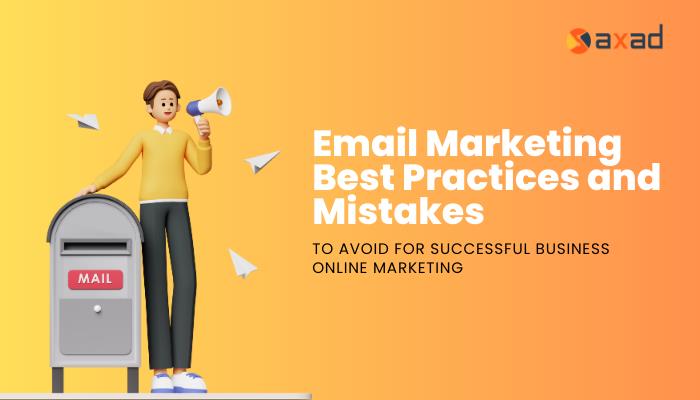Email Marketing Best Practices and Mistakes to Avoid for Successful Business Online Marketing
| August 18, 2023
In today’s digital age, business online marketing is at the forefront of reaching and engaging with customers. Amidst all the cutting-edge strategies, email marketing remains one of the most effective and efficient tools to promote products and services, nurture leads, and drive conversions. However, to leverage the full potential of email marketing, businesses must follow best practices while being mindful of common mistakes that can hinder their success. In this blog, we will explore the best practices for email marketing and shed light on the mistakes that should be avoided to ensure your campaigns are fruitful.
I. Email Marketing Best Practices:
1. Define Clear Goals: Begin by establishing specific and measurable goals for your email marketing campaigns. Whether it’s increasing website traffic, driving sales, or enhancing customer engagement, clarity in objectives will help you craft targeted and relevant content.
2. Build a Quality Email List: Focus on growing a permission-based email list of engaged subscribers who genuinely want to receive your content. Utilize sign-up forms on your website, social media platforms, and landing pages to capture valuable leads.
3. Personalization Matters: Address your recipients by their names and segment your list based on their preferences, behavior, and demographics. Personalized emails have higher open rates and lead to better engagement.
4. Mobile-Optimization: With the majority of people checking emails on mobile devices, ensure that your emails are responsive and optimized for various screen sizes. A seamless mobile experience will enhance user engagement.
5. Compelling Subject Lines: Craft attention-grabbing subject lines that entice recipients to open your emails. Avoid using click-bait tactics and be honest about the content inside.
6. Valuable Content Creation: Deliver content that provides value to your subscribers. Share informative articles, exclusive offers, and educational resources that align with their interests and pain points.
7. Clear Call-to-Action (CTA): Every email should have a clear and compelling CTA. Whether it’s making a purchase, joining up for a webinar, or downloading an e-book, direct your receivers in the right direction.
8. A/B Testing: Constantly experiment with A/B testing to optimize your email campaigns. Test different subject lines, CTA buttons, layouts, and content to identify what resonates best with your audience.
II. Common Email Marketing Mistakes to Avoid:
1. Neglecting Segmentation: Failing to segment your email list can lead to irrelevant content being sent to subscribers, resulting in lower engagement rates and higher unsubscribe rates. Take the time to segment your audience based on their preferences and behavior.
2. Sending Too Many Emails: Bombarding your subscribers with an excessive number of emails can be overwhelming and annoying. Maintain a consistent schedule and avoid sending emails too frequently to prevent unsubscribes.
3. Ignoring Email Analytics: Not paying attention to email analytics and performance metrics can be detrimental to your Email Marketing efforts. To determine the effectiveness of your efforts, keep an eye on the open rates, click-through rates, and conversion rates.
4. Using Poorly Designed Templates: Unappealing and unprofessional email templates can negatively impact your brand image. Invest in well-designed and visually appealing templates that reflect your brand identity.
5. Not Testing Emails Before Sending: Sending out emails without testing their appearance and functionality can lead to embarrassing mistakes. Always preview and test your emails across various devices and email clients.
6. Overlooking the Unsubscribe Option: Ensure that the unsubscribe option is easily accessible in your emails. Ignoring unsubscribe requests can tarnish your reputation and result in legal repercussions.
7. Using Misleading Subject Lines: Deceptive subject lines may increase open rates momentarily, but they will harm your credibility and trust in the long run. Always be honest and transparent in your subject lines.
8. Not Complying with Anti-Spam Laws: Ensure that your email marketing practices comply with anti-spam laws like the CAN-SPAM Act and GDPR. Non-compliance can lead to severe penalties and damage your brand reputation.
Final Thought
Email marketing remains a fundamental pillar of successful business online marketing. By adhering to the best practices and avoiding common mistakes, businesses can harness the power of email marketing to engage their audience, build strong relationships, and drive conversions. Personalization, valuable content, and optimization for mobile devices are key factors in enhancing the effectiveness of your email campaigns. Remember, your subscribers are real people, and by respecting their preferences and providing value, you can build lasting connections and ensure the success of your email marketing endeavors.
